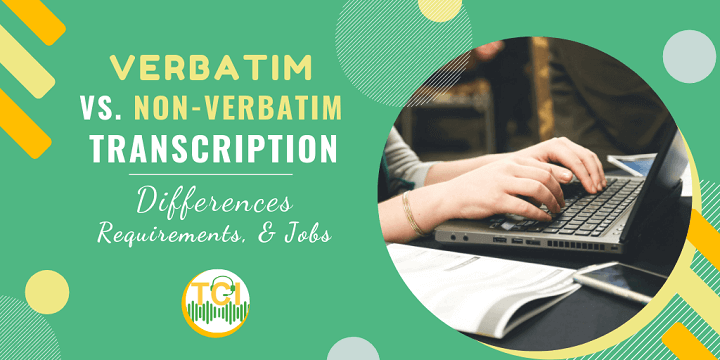
When you think of hiring a transcription service as per your job requirement, you need to consider the exact type of transcription that you will be requiring. While people might understand the idea behind getting an unabridged account of what was spoken in a meeting, a lecture, or a seminar in simple terms, they might be clueless as to what a transcript looks like actually.
 A verbatim transcript is prepared by transferring each and every utterance, including those that are non-verbal, and even the pauses, laughter, silence and throat clearing in an audio file exactly the same way as delivered.
A verbatim transcript is prepared by transferring each and every utterance, including those that are non-verbal, and even the pauses, laughter, silence and throat clearing in an audio file exactly the same way as delivered.
A transcriptionist who is a specialist in a verbatim transcript is particular about taking down every detail in the recording that he or she hears. They spell out the fillers, while the sounds that are ambient, like background voices or doors opening, are typically described in parentheses. Vocal inflections and the tone of voices are described by various punctuation styles. When multiple speakers are involved, a verbatim transcript indicates segments in which there is an overlap of voices.
In a verbatim transcript, false starts, repetitions, or grammatical errors are copied faithfully and delivered without being tidied up, or by being made more concise. The reader receives a true copy of an event with the words transcribed exactly the way they were spoken, thereby according a movie-dialogue, realistic feel to the transcript. Such a transcript is quite helpful when an interview is being documented or serves as a testimonial for legal purposes, as the thought process gets implied through verbal cues, such as repeated words or phrases, or awkward hesitations.
Also Read: How To Get Started As A Transcriptionist – A Complete Guide [Part 1]
Businesses that are looking to get meetings transcribed, or academicians who want to provide their lectures to the students in the written form, wouldn't want to include something like a verbal nod included in that transcript, but rather would want to go with a clean transcript so that it is more reader-friendly.
A transcriptionist who does non-verbatim or “intelligent” transcription, rather than typing the words exactly the way they are spoken, captures the fundamental meaning behind them. Errors in grammar are rectified and words or sounds that don't contribute to the underlying message are removed. If fillers or repetitions occur naturally in the speakers' speech patterns, they are simply removed by the transcriptionist. In other instances, paraphrasing of a statement is required which conveys the same idea, but more succinctly. A non-verbatim transcript can be published online without edits, or it can serve as a marketing piece.
An experienced transcriptionist is generally adept in both true verbatim or clean transcripts of a recorded content that you provide.
Read more about everything about transcription guidelines for transcribers.
 Verbatim and Non-Verbatim Transcription Jobs
Verbatim and Non-Verbatim Transcription JobsAn experienced transcriptionist is often adept in doing both the above-mentioned types of transcription. So in case you reckon yourself to be a seasoned transcriptionist looking to make your mark in and earn well doing both these forms of transcription, you can find quality jobs that pay well on reputed freelancing platforms like Upwork or else search on job boards online. One such job board, to give an example, is of the Transcription Certification Institute or TCI that provides the perfect platform for both job-seekers and global transcription companies looking to hire transcriptionists world-wide willing to work remotely.
Your TRANSCRIPTION CAREER CAPSULE to Help You BOOST Your Potential
Latest Industry News, Jobs, Tips and More..

Comments are closed